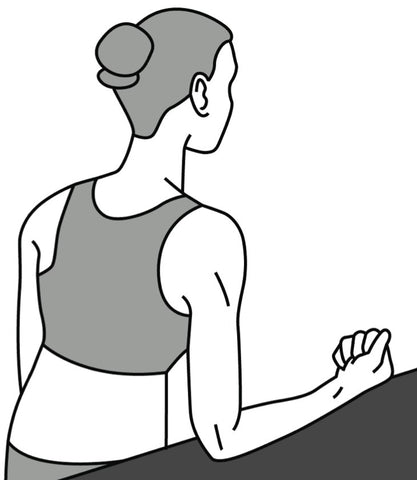The early stages of a frozen shoulder are generally associated with acutely painful muscle "spasms"
In the early days of a frozen shoulder any sudden movement such as reaching for a falling cup, holding a door open, or even being bumped into on the street, can cause a sudden and excruciating protective muscle spasm.
The spasm felt is due to a ‘twanging’ of the tendon sheath surrounding the (long head of the) biceps tendon. This gets massively inflamed during phases I and II of a frozen shoulder. The tendon sits in a groove at the top of the humerous bone ‘bicipital groove’. The inflamed tendon slips in and out of the bicipital grove – that slip is what causes the acute catching pain and spasm in the shoulder and arm.

The Biceps Tendon & its sheath
Understanding the spasm helps to control it!
These acute attacks of “blinding” pain will often add to the clients already considerable burden, by contributing anxiety. Most people find that they can stop these attacks by doing the following exercise - however, this exercise needs to be understood first.
When an unexpected movement goes through the joint the inflamed biceps tendon can ‘twang’ as described above. The muscles all lock into a protective spasm, especially the biceps muscle itself.
This sudden increase in the tone of all the muscles can be reversed by going with the contraction. The muscles no longer ‘see’ a need for their activity and are switched off.
However, there is quite a fine line between gently going with the muscles and creating a further ‘challenge’, so remember that the exercise described below is subtle and should be performed slowly and gently.

Spasm Exercise
• Rest the hand on a table or chair back palm up.
• Allow the weight of the arm to rest on the hand, causing slight compression at the shoulder joint.
• Breathe deeply and slowly. It helps to apply the pressure as you breathe out.
• It is as though you were about to lean your body weight on your hand, while only applying a fraction of the force.
NAT embraces the body's own healing processes, as an alternative to forcing the shoulder into painful movements
Frozen Shoulder and the Niel Asher Technique
The Niel-Asher Technique is a 'natural' method of treatment that utilizes the body's own healing mechanisms. No drugs. No surgery. It is the only manual therapy technique that has been clinically proven to treat frozen shoulder.
The technique uses a specific and unique sequence of manipulations and pressure points to the shoulder joints and soft-tissues. In essence, these can be thought of as 'inputs' into the nervous system.
The technique uses a specific and unique sequence of manipulations and pressure points to the shoulder joints and soft-tissues. In essence, these can be thought of as 'inputs' into the nervous system.
NAT works with the body, listening to the body's wisdom - not by forcing the arm into the restricted ranges but by applying gentle stimulation to muscles whilst they are resting.
The technique has been in use since 1997 and has been adopted and approved by Doctors, Physiotherapists, Osteopaths, Massage Therapists, and Chiropractors in the UK, Europe, and the United States.
The technique has been in use since 1997 and has been adopted and approved by Doctors, Physiotherapists, Osteopaths, Massage Therapists, and Chiropractors in the UK, Europe, and the United States.
Комментариев нет:
Отправить комментарий